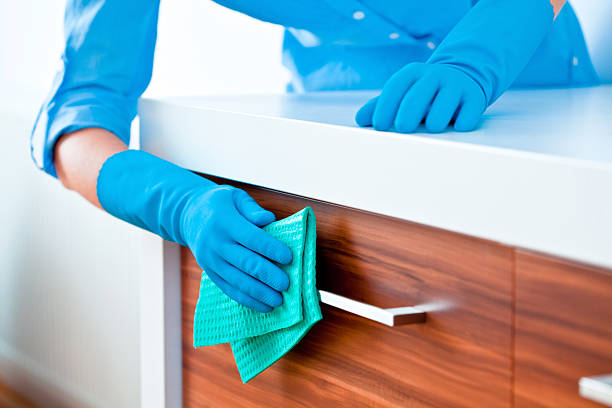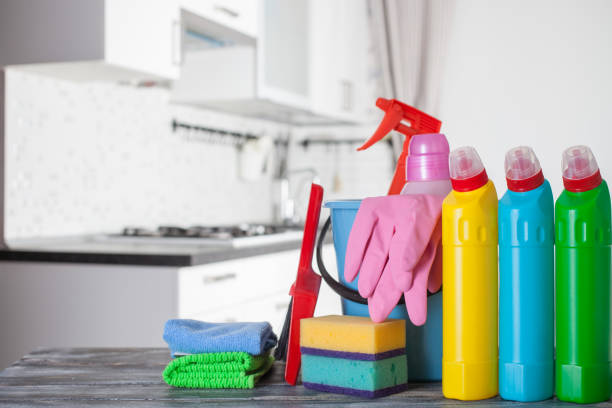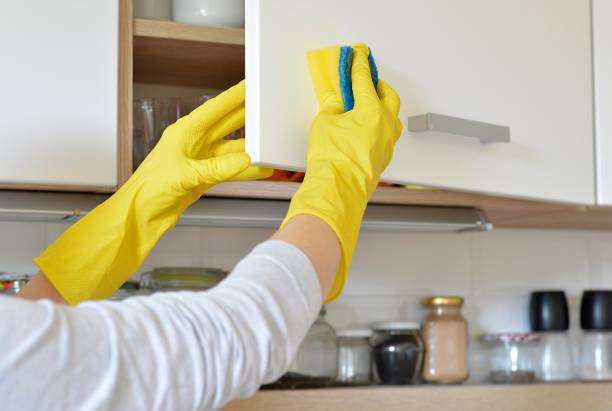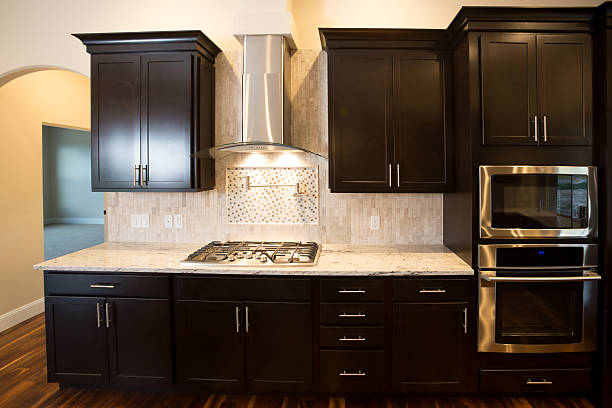Learning how to clean kitchen cabinets can go a long way to help you improve kitchen hygiene and make your kitchen sparkle at all times.
Cabinets are the most prominent area in most kitchens, and when there are dirt and stains, it is easily noticeable; however, accidental spills, greasy fingerprints, and splatters are bound to occur from everyday cooking. When these things are left unattended to, not only will your kitchen esthetics suffer, your cabinets will also harbour harmful bacteria and viruses. So, it would be best if you cleaned your kitchen cabinets as often as possible.
Regardless of the type of kitchen cabinet you have, whether glass, laminate, wooden, or painted, there are effective ways to clean them to ensure they retain their appeal and sparkle over time; we will discuss all that in this guide.
See also: Discover 10 Amazing Garden Egg Benefits
When to Clean Kitchen Cabinets
You can schedule your cleaning time in three parts, which are daily, weekly and seasonal cleaning; this will help you save time and energy and make you more consistent.

Daily Cleaning
If you spill or splatter food as you cook, it is best to clean it as soon as possible; you should always have a damp cloth within close reach for quick cleaning as you cook. This will make the need for deeper cleaning less frequent.
Weekly Cleaning
Although you can frequently wipe down your kitchen cabinet to remove dirt and stains, a weekly spot treatment is also recommended. Just use a microfiber cloth and a multipurpose cleaner to wipe away spatters, fingerprints, spills, and so on and do not forget to disinfect hard surfaces.
Seasonal Cleaning
The weekly cleaning can keep your cabinets clean at all times, but there are areas you will not always clean every week because they are out of reach; that is why a seasonal deep cleaning is necessary.
You can do the deep cleaning 3 to 4 times a year; start by emptying all the cabinets, then wipe down shelves and doors with a microfiber cloth and mild cleanser. You can also use a clean toothbrush to treat corners and small crevices. Then, allow the cabinets to dry off completely before restocking and arranging.
Materials Needed for Cleaning Kitchen Cabinets
The items you will need to clean your kitchen cabinets are fewer than you think.
- A scrub brush or soft sponge.
- Vacuum with a crevice tool.
- Microfiber cloth.
- Baking soda for tough stains, burnt-on messes and weird smells.
- Multipurpose cleaner.
- Dish soap.
- White vinegar.
- Spray bottle.

How to Clean Kitchen Cabinets Regularly
Whether you have a glass, wooden, laminate or painted kitchen cabinet, these simple steps can help keep your kitchen clean and bright if you do them weekly or as often as possible.
- Apply a safe, all-purpose cleaner or a mixture of dish soap and water to a cloth; make the clot damp but not overly wet.
- Wipe both sides of the cabinet door and pay special attention to the drawer handles and knobs where there will likely be greasy fingerprints.
- If you have stock-on grime, especially for cabinets above the stove, use a soft sponge or scrub brush to remove it and wipe it clean with a cloth.
- Use another clean, damp cloth to rinse the cabinet until there’s no soap or cleaner residue.
- Use a microfiber cloth to buff dry, and if you are using a cabinet cream, buff afterwards, but read the label for directions.
See also: The Amazing Benefits of Soursop Leaves
How to Deep Clean Kitchen Cabinets
For a quick touch-up or weekly cleaning, you can clean the cabinet doors, knobs, and tops, but for deep cleaning or seasonal cleaning, you must go deeper to clean every part of the kitchen cabinet. Follow these simple steps to do that.

- Start from the upper cabinets and carefully work your way down. Empty each cabinet and drawer; you can empty and clean them one after the other or do a few at a time, but don’t empty them all at once.
- Use an all-purpose cleaner and a damp microfiber cloth to wipe down the inside of the cabinet, including the shelves and the back of the cabinet doors.
- Also, clean any hardware, grooves or trim where grease and dust can build up.
- Use a small brush to reach the small crevices and gently scrub the area.
- Buff dry
- Clean the cabinet doors, knobs, and drawer pulls as instructed earlier.
- Restock and arrange your cabinets when it is all clean and dry.
See also: 17 Budget Friendly Chairs For Living Room
If you desire to maintain good kitchen hygiene, learning how to clean kitchen cabinets is a great way to start. Kitchen cabinets collect grease, splatters, spills, dust, and other cooking residues all day. Over time, they stick to the cabinet surface, making it ugly and fostering the growth of bacteria, which can pose a serious health risk in the long. So, the importance of cleaning your kitchen cabinet cannot be overemphasised; it is essential for a healthy and happy life.



